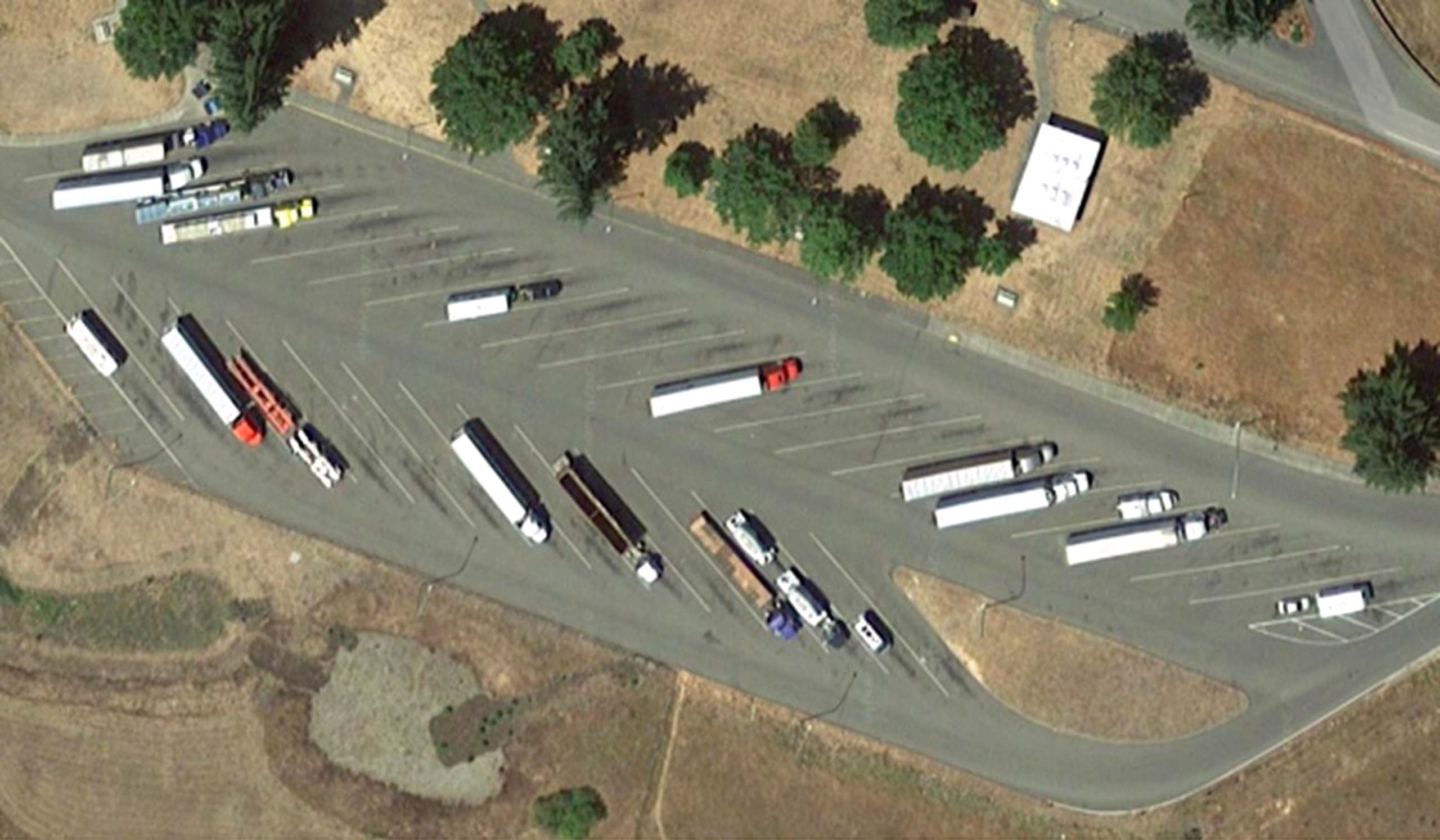Existing truck parking facilities—such as freeway rest areas, welcome centers, and weigh stations—are struggling to meet the increasing demand of freight vehicles on the road. Lack of parking spaces and real-time information about parking availability greatly exacerbates trip uncertainty and often results in illegal parking and overtime driving. In response, this project worked to improve a system to provide information about real-time and predicted truck parking space availability to freight truck drivers.
Truck parking information management systems (TPIMS) collect and convey real-time parking information to truck drivers. For this project, WSDOT worked with the University of Washington’s Smart Transportation Applications and Research Laboratory (STAR Lab) to conduct a truck parking pilot study of such an advanced truck parking management system.
The comprehensive solution that this project developed comprised a parking detection system that collects and processes robust, real-time parking data; a predication algorithm that estimates future parking availability; and an online parking availability information platform accessible from smart phones and other personal electronic devices that provides real-time and predicted parking information.
For the study, the team leveraged their expertise in vehicle detection research and vehicle detection devices to assess truck parking detection technologies described in the literature and to select the most promising technology for field evaluation. They collected truck parking space availability information from truck detection devices embedded in the pavement of multiple parking lots and transmitted that information to a truck parking information center.
The researchers then applied a novel artificial intelligence model based on historical truck parking space occupancy data and other contributing factors to predict parking availability. Empowered by that model and a deep learning prediction algorithm, the pilot TPIMS achieved an error rate of less than 12 percent in predicting parking availability from 10 minutes to four hours ahead.
The researchers also developed a mobile application to receive the parking availability information from the parking information center and then offer visual, real-time availability information. Both the real-time and multi-timescale prediction occupancy information was successfully disseminated through a customized website and user applications in real time.
The results from this work provide a better understanding of the advantages, disadvantages, and feasibility of retrofitting existing truck parking detection products and the current technologies used for TPIMS implementation. The mobile application and website can serve to disseminate both real-time and predicted truck parking availability information to truck drivers to aid in trip routing and scheduling. These research outcomes will help improve TPIM systems and enhance the efficiency of truck parking infrastructure usage, thereby increasing the robustness of the entire freight network.
Report: WA-RD 904.1
Authors:
Yinhai Wang
Hao Yang
Yifan Zhuang
Wei Sun
UW Civil and Environmental Engineering
Sponsor: WSDOT
WSDOT Technical Monitors:
Matthew Neeley
Karthik Murthy
WSDOT Project Manager: Doug Brodin

